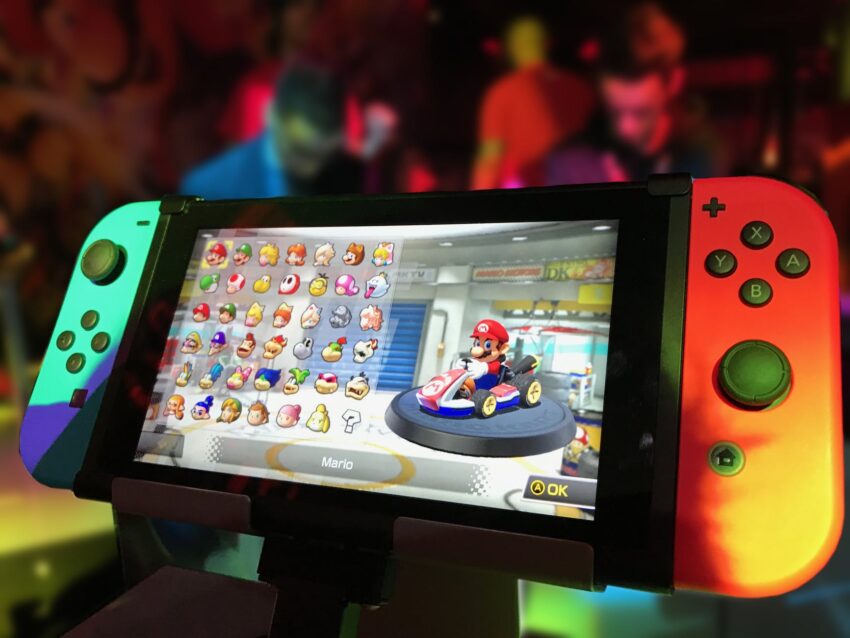User-generated content systems in games
User-generated content systems in games (UGC) refers to content created by players, not developers. In gaming, UGC enhances engagement and personalizes the experience. Creators play a crucial role in shaping this by offering unique perspectives and promoting games through social media. UGC’s popularity will impact the future of gaming and player interaction with game content. When potential players see content created by other gamers, it adds a layer of authenticity and trust, which can be more convincing than promotional materials produced by the game developers themselves. UGC showcases real experiences, allowing potential players to form opinions about a game.

The Evolution of UGC in Video Games
The development of user-generated content (UGC) in video games has a significant historical perspective, with key milestones that have led to its integration into popular gaming platforms. With the rise of UGC-based games like Roblox, Minecraft, and The Sims, players have the opportunity to create their own content and share it with others. This has brought about a shift in the gaming industry, with game developers now actively seeking ways to integrate user-created content into their games. The influence of UGC-based games can be seen in the popularity of game mods and custom game modes, highlighting the importance of allowing players to express their creativity within the gaming world.
The Impact of UGC on Game Development
UGC has had a profound impact on the development of video games. It has opened up new possibilities for game creators by tapping into the imagination and creativity of players. Developers are no longer solely responsible for generating content; instead, they have embraced the concept of player agency, allowing gamers to shape their own experiences.
UGC and the Game Industry
User-generated content (UGC) has transformed the gaming industry at a high level, changing how developers approach their business models. UGC increases player engagement and creates new revenue streams. It allows developers to rely on their community for content and ideas, reducing costs and increasing player retention. Games like Minecraft and Roblox have thrived by enabling players to create and share content, fostering vibrant communities. UGC has ushered in a new era of collaboration between developers and players, resulting in more immersive gaming experiences. As UGC evolves, we can expect innovative game concepts that blur the lines between developer-created and player-generated content.
UGC’s Role in Player Engagement and Retention
User-generated content systems in games enhances player engagement in video games by fostering community and ownership. Games like Minecraft, Roblox, and The Sims have thriving UGC communities that drive engagement and retention. Developers can leverage UGC by providing tools, fostering a supportive community, and showcasing the best content. Incentives like rewards or competitions can further drive engagement. Prioritizing UGC in game design keeps players engaged and fosters a loyal fan base.
UGC and Game Content Creation
User-generated content (UGC) is an integral part of modern gaming. Players create diverse content using various tools and techniques, such as unique levels, characters, and items to share with the community. UGC enhances gameplay, adds longevity to games, and fosters a sense of community. By empowering players to express their creativity, UGC-based games contribute to the growth of the gaming industry in recent years.
Challenges and Considerations in UGC Systems
While user-generated content (UGC) systems in games offer numerous benefits, they also come with their fair share of challenges and considerations. One major challenge is maintaining quality control and ensuring that inappropriate or low-quality content does not overshadow the overall gaming experience. Developers must implement robust moderation systems to filter out undesirable UGC while still allowing for creative expression.
Moderation in UGC-based Games
UGC-driven platforms like Google allow users to share content and engage with each other, but maintaining community guidelines and ensuring fairness and safety is important. Content moderation plays a crucial role in achieving this balance by monitoring user-generated content for inappropriate or harmful material. Balancing player freedom with community guidelines requires understanding the platform’s audience and values. This can be done by establishing clear rules, using automated tools to detect harmful content, providing easy reporting options, and having a dedicated team for reviewing flagged content. Content moderation is essential for UGC-driven platforms, such as Google, to maintain a safe and fair environment for their users.
UGC in the Metaverse
User-generated content systems in games (UGC) is vital in shaping the metaverse and virtual worlds. It allows users to create their own experiences, environments, and content within these worlds, fostering collaboration and innovation. However, connecting UGC across different platforms poses challenges like quality control and copyright infringement. As the metaverse expands, UGC will play a significant role in shaping its future.
Roblox
Roblox is a user-generated content system in which players can create their own games and play games created by others. With over 100 million active monthly users, Roblox is one of the most popular gaming platforms out there. The platform allows for endless creativity, with players using Roblox Studio to design and build their own games. This opens up a world of possibilities for players who want to explore different genres of games or even create their own unique game ideas. Whether you’re a casual player or a seasoned game developer, Roblox offers something for everyone.
The Future of UGC in Gaming
The future of user-generated content (UGC) in gaming is incredibly promising. As technology continues to advance, we can expect UGC systems to become even more robust and sophisticated. This means that players will have even greater creative freedom and control over their gaming experiences.
UGC and Social Media Integration
User-generated content systems in games (UGC) is a crucial bridge between gaming and social media platforms. It allows players to share experiences and connect with like-minded individuals. UGC includes gameplay footage, reviews, and tutorials, as well as any form of content uploaded by users onto social media platforms. It has sparked creativity among content creators on Facebook, Twitter, and Instagram. UGC helps creators expand their reach and attract viewers by producing high-quality content. It also provides valuable insights for game developers to improve their products based on audience preferences. UGC empowers players to own their experiences and shape the gaming industry’s future in the expanding world of social media platforms.
UGC and Emerging Gaming Platforms
User-generated content systems in games (UGC) is crucial in the gaming industry, impacting mobile, console, and PC gaming. Gaming giants like Nintendo, Microsoft, and Epic Games have recognized its importance and incorporated UGC in their developments. For example, Nintendo’s Super Mario Maker 2 and Microsoft’s Minecraft allow players to create and share their content. UGC-based games offer unique experiences, allowing players to create characters, levels, and storylines to share with others. Social media platforms facilitate the sharing of creations, leading to new forms of gameplay like speed runs, challenges, and mods that enhance the gaming experience. UGC transforms gaming by giving gamers control over their experiences and fostering a global community.
What is user-generated content in games?
User-generated content (UGC) in games refers to the content created by players within a game environment. It allows players to create and share their own experiences, ranging from custom levels and characters to mods and gameplay footage. UGC empowers players by giving them control over their gaming experiences and fostering a sense of community among gamers. This content can be shared on social media platforms, showcasing the creativity and innovation of players.
What are the different types of UGC in games?
User-generated content (UGC) is a popular trend in gaming that enhances gameplay and allows players to express their creativity. It includes mods, user-created levels, and character customization options. UGC also provides valuable insights to developers and gamers through reviews, videos, and social media posts, fostering player engagement.
What is UGC in game development?
UGC in game development involves integrating user-generated content into the game, such as allowing players to create levels, characters, and gameplay elements. Game developers can collaborate with players to incorporate their ideas or directly add their content to the game. UGC enhances player engagement, creativity, and extends the game’s lifespan by continuously providing new content, including the publishing of user-generated game content.
Creator Conclusion
User-generated content (UGC) is a vital part of the gaming industry. Gamers create and share their content online, adding value and diversity to the gaming experience. UGC will continue to evolve, becoming more immersive with advancements in technology like virtual reality and augmented reality. Platforms like YouTube Gaming, Twitch, and Mixer provide opportunities for aspiring creators to showcase their skills, connect with others, and monetize their content. Joining the gaming content creation community, whether through video live streaming gameplays or sessions, blog reviews in specialized magazines, or chats and forums for players, offers endless opportunities for growth and success in this industry.
Follow on Instagram.

